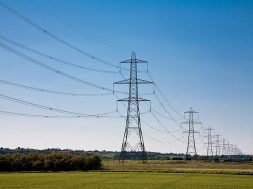
Decision will help inject an additional 3.5GW of power needed to reach the state’s 11GW offshore wind goal
New Jersey has officially launched its second State Agreement Approach (SAA) to bring power from offshore wind projects ashore.
The New Jersey Board of Public Utilities (NJBPU) has asked the state’s grid operator to include the state’s offshore wind target in its Regional Transmission Expansion Planning (RTEP) using the SAA.
The process is used to identify and award projects to help transmit power from offshore wind projects in New Jersey. The first SAA selects the Larrabee Tri-Collector Solution to help bring 7.5GW of power into the grid.
It is expected that SAA 2.0 will solicit proposals to inject the additional 3.5GW needed to reach the state’s new wind goal, of installing 11GW of offshore wind capacity by 2040, at the Deans 500kV substation.
The Deans facility was identified by grid operator PJM Interconnection and Board staff for SAA 2.0 as it is near high electric load centres, accessible lease areas likely to service New Jersey, and was previously earmarked as having available capability to accommodate the desired injection.
In addition, the board directed staff to prepare an SAA 2.0 Solicitation Guidance Document (SAA 2.0 SGD) that will include details regarding the solicitation components and the proposal evaluation process, and to issue a draft SAA 2.0 SGD for public comment in order to inform the development of the final SAA 2.0 solicitation.
“Today’s action is extremely important for the future of our offshore wind programme,” said NJBPU president Joseph Fiordaliso.
“As we look to achieve Governor Murphy’s new, increased goal of 11GW of offshore wind capacity by 2040, we must create additional pathways for wind energy to be brought on shore and into the PJM grid.”
PJM President and chief executive Manu Asthana added: “New Jersey has been a pioneer in developing the infrastructure needed to achieve its ambitious offshore wind policies. NJBPU recognised early on the value of PJM’s independent, competitive and proven transmission planning process, and we look forward to continuing to help New Jersey achieve its offshore goals as reliably and cost-effectively as possible.”








